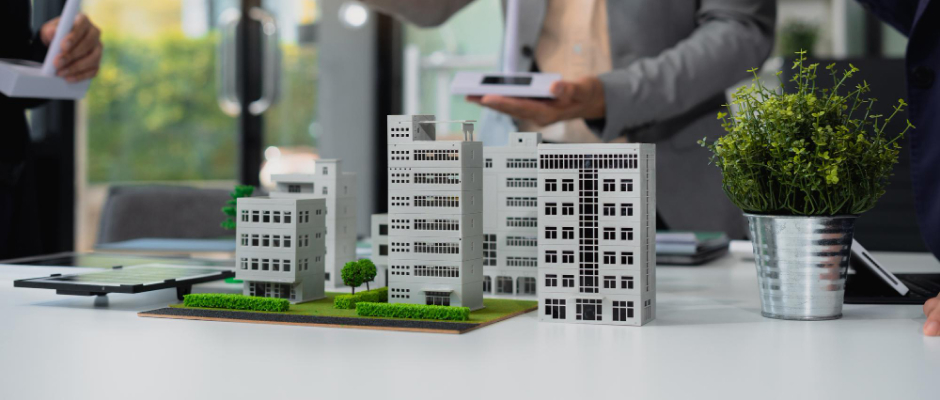
October 24, 2025
|
5 Minutes
The residential building industry isexperiencing ongoing improvement because the owners of the projects aredemanding more accuracy, shorter deadlines, and sustainability. The developmentof single and multi-family dwelling units is therefore subjected to risks suchas design coordination, budget control, and cross-team collaboration. Thismakes traditional methods of construction ineffective and error-prone.
BIM, or Building Information Modeling, hasemerged as a digital model that simplifies the scope of different phases ofresidential development. Hence, it isessential to work with a BIM expert to maximize itspotential.
Every residential project, whethersingle-family or multi-family, has its own set of challenges to coordinate andorganize, including scheduling and quality control. The following are some ofthe challenges that most significantly impact the current state of residential construction.
Residential construction is typically associatedwith an architect, an engineer, and a contractor, each with a distinct designelement. The structural, electrical, and plumbing plans may conflict when plansfail to fit or when design changes are made at the latter stages of the plan.Delays in construction and expensive reworks are unavoidable.
Strict deadlines, the lack of labor, and anyother unpredictable situations still upset the residential programs. Multifamily projects also increase complexity because teams have to balance several units. Ignoring the benefits of BIM services and proper planning workflow in material and resources distribution results in unnecessary inefficiencies that can undermine the organization and scheduling of delivery.
Increasing material costs, design changes, andunforeseen construction problems commonly cause budget inflation. Developersare under constant pressure to deliver high-quality housing within a limitedbudget. A lack of real-time monitoring and poor estimation can increase costsand reduce profitability despite initial planning.
Residential projects necessitate a continuousflow of communication among various teams and stakeholders. There may beproject conflicts and errors due to miscommunication or delayed data sharing.In the event of several contractors or locations, the absence of central information systems increases confusion and influences the accuracy ofdecision-making.
Residential developments in the modern world should be based on changing environmental requirements and local building codes. The fulfillment of such requirements introduces an additional source ofcomplexity, especially in urban projects. Maintaining project affordability while balancing energy efficiency, material choice, and compliance documentation is always a challenge for developers.

Building Information Modeling (BIM) is acritical component in ensuring that the concept design is translated intoconstruction implementation. The following are the transformational advantages that render BIM invaluable to residential developers.
Building complex residential units requires expert BIM planning to avoid uncertainty. It helps to generate accurate 3D models digitally, portraying all the details of a design and structure, while identifying BIM mistakes to avoid. Construction planners and designers can manipulate models and perform real-time simulations of layouts and the flow of space, lighting, and other elements.
For this reason, the potential cost of complex modifications isminimized, as clients can see and select design options early on. The precision of designs on paper, which captures all aspects of the proposed, visually articulated designs, is implemented on the construction site. This desirable practice helps realize efficiency and improve customer satisfaction.
One of the best features of this technology is the integration of BIM Coordination among the project parties involved. This information does not alter any existing form of information, as designers, contractors, clients, and other stakeholders all deal with a single model.
All the changes of the model are described inreal-time to every stakeholder. This kind of transparency goes a long way towards mitigating any ambiguity, as well as the lack of trust that destroysthe approval processes. BIM technology features collaborative capabilities that enhance foreseeability and ultimately improve the overall harmony of all residential construction projects.
Construction Waste management is centered around traditional construction processes due to inadequate material estimations and isolated BIM implementation, which results in limited data sharing and excessmaterial waste. BIM contributes to waste reduction by accurately estimating and quantifying costs through effective cost planning and management. Each modelcontains embedded information on materials and how many are needed.
Automated estimating and quantifying saves abuilder time and lowers waste. Builders can also accurately forecast costs, ensuring there are no unexpected expenses. For developers who focus on costpredictability for multi-family units, cost savings contribute to maintaining project quality and sustainability.
BIM also enables the identification of hazards in potential construction sequences beforehand. System visualization and detailed BIM documentation will be effective in facilitating efficient monitoring of mitigation measures and identifying safety risks.
Moreover, the degree to which BIM has reduced the need for rework inthe field and the associated risks is substantial. This proactive safety planning is particularly beneficial in situations involving large residential projects, where multiple contractors are involved, allowing construction phasesto be undertaken efficiently and with a low chance of potential hazards.

To residential developers nowadays, eco-sensitive design is a must,which necessitates the implementation of BIM. BIM in sustainable and green building design offers an assessment of building materials, sustainability, daylighting, and energy performance, long before any actual buildings have been built.
The model enables the achievement of the LEED or green certification through the use of documentation and analysis. With BIM, constructors candeliver environmentally friendly home products, in line with the current sustainability goal, but that minimize operational expenses in the future.
BIM's value surpasses the initial construction phase. Post project completion, the BIM model turns into a digital replica of the property construction, which is a data-rich asset across the maintenance departments.
The facility managers can seamlessly access core details, including maintenance schedules, equipment specifications, and data on space usage, promptly. It results in an overall enhancement of operational efficiency thatprolongs the building's lifespan. Across the multi-dwelling units, it equips property managers to track units, monitor repairs, and optimize resource allocation effectively.
Both developers and homeowners constantly seek to visualize theirfuture spaces prior to construction. BIM offers interactive walkthroughs andreal-time modifications, turning customization seamless and engaging.
The client's decisions are often improvised regarding layouts, finishes, and designs during the initial stages of the construction project. This improved interaction reduces dissatisfaction post-construction, ensuringthat the end result aligns with the client's expectations. It helps to modify the home construction experience into a collaborative and transparent venture.
Companies that handle the management of single- and multi-family construction projects should offer scalability. The data-driven approach of BIM helps the reuse of the BIM models, templates, and design standards.
The adaptable nature streamlines the duplication of successful designsfor future projects without having to start from scratch. It helps the developers grow their project portfolios and retain the quality consistency across different construction sites. The scalable potential of BIM stands invaluable to help with the prolonged growth and diversification of projects.
BIM has transitioned the entire outlook of residential constructioninto a procedure that is driven by precision, sustainability, and collaboration. Technology helps to equip the teams for smarter planning, constructing faster, and efficiently managing the resources. This helps to establish a long-term value for both the builders and residents.
For expert guidance and tailored BIM solutions that align with your residential vision, Modelo Tech Studio can provide the support you need. Our team of skilled professionals ensures seamless project execution through advanced modeling and integrated design support - contact us to get started!





.png)
We appreciate your interest in our services. To provide you with an accurate and comprehensive quote, we will need some general information about your project. This will help us understand your specific needs and tailor our proposal to meet your requirements effectively.
.png)